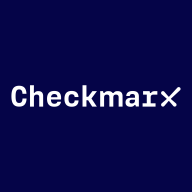

Checkmarx One and Polyspace Code Prover deliver robust solutions for software security and verification. Polyspace Code Prover slightly edges out in advanced static code analysis, though Checkmarx One is favored for affordability and support services.
Features: Checkmarx One integrates well and offers comprehensive security scanning, advantageous for DevOps teams. Polyspace Code Prover excels in sophisticated static analysis and proving code correctness without execution while also providing precise identification of coding flaws.
Room for Improvement: Checkmarx One could enhance its scanning speed and the navigation intuitiveness of its tools. Polyspace Code Prover could improve scalability and parallel processing capabilities. Checkmarx needs quicker scanning, contrasting with Polyspace's scalability needs.
Ease of Deployment and Customer Service: Checkmarx One ensures straightforward deployment and reliable customer service, aiding smoother integration. Polyspace Code Prover demands more setup time, but offers responsive and knowledgeable support. Checkmarx offers seamless initial experiences, while Polyspace requires significant setup effort but maintains high support quality.
Pricing and ROI: Checkmarx One is seen as budget-friendly, offering better pricing options for users seeking value. Polyspace Code Prover’s advanced features justify its higher setup costs, delivering long-term cost-effectiveness for thorough code analysis.
| Product | Market Share (%) |
|---|---|
| Checkmarx One | 10.4% |
| Polyspace Code Prover | 1.4% |
| Other | 88.2% |


| Company Size | Count |
|---|---|
| Small Business | 30 |
| Midsize Enterprise | 9 |
| Large Enterprise | 38 |
| Company Size | Count |
|---|---|
| Midsize Enterprise | 1 |
| Large Enterprise | 6 |
Checkmarx One is an enterprise cloud-native application security platform focused on providing cross-tool, correlated results to help AppSec and developer teams prioritize where to focus time and resources.
Checkmarx One offers comprehensive application scanning across the SDLC:
Checkmarx One provides everything you need to secure application development from the first line of code through deployment and runtime in the cloud. With an ever-evolving set of AppSec engines, correlation and prioritization features, and AI capabilities, Checkmarx One helps consolidate expanding lists of AppSec tools and make better sense of results. Its capabilities are designed to provide an improved developer experience to build trust with development teams and ensure the success of your AppSec program investment.
Polyspace Code Prover is a sound static analysis tool that proves the absence of overflow, divide-by-zero, out-of-bounds array access, and certain other run-time errors in C and C++ source code. It produces results without requiring program execution, code instrumentation, or test cases. Polyspace Code Prover uses semantic analysis and abstract interpretation based on formal methods to verify software interprocedural, control, and data flow behavior. You can use it on handwritten code, generated code, or a combination of the two. Each operation is color-coded to indicate whether it is free of run-time errors, proven to fail, unreachable, or unproven.
We monitor all Application Security Tools reviews to prevent fraudulent reviews and keep review quality high. We do not post reviews by company employees or direct competitors. We validate each review for authenticity via cross-reference with LinkedIn, and personal follow-up with the reviewer when necessary.